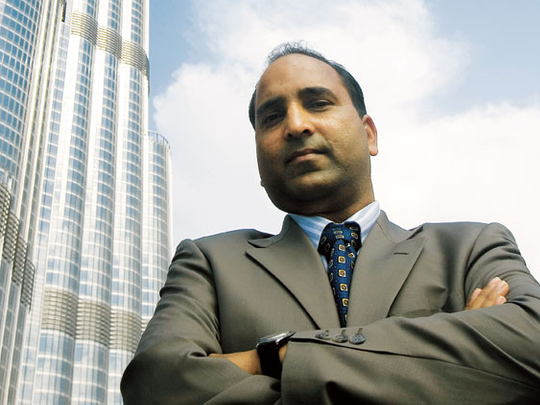
Today when I crane my neck to look up at the Burj Khalifa, I feel so blessed that I played a small part in the making of this iconic tower, something that was beyond my imagination eight years ago.
Ever since I was a child, I was keen to stand out from the crowd and do something entirely different.
My father always told me I had leadership skills. I was active in student activities during my college days in Patna, India, always volunteering to take up challenging jobs such as event management or raising funds for social events. In those days there were no sponsors for students' social events so I would do door-to-door canvassing to raise funds, something most students would not dream about. My aim was to turn even the most ordinary event into an excellent one that became the talk of the town.
Health and safety issues are the cornerstone of the construction industry today.
It is the pursuit of perfection that drives the standards of excellence in this field. If we value human lives and want to attain human excellence in the field of architecture and construction, we have to first think of how to achieve it with minimum mishaps or accidents.
I had no clue I would get into the health and safety field as this was a relatively new area when I completed my masters in physics and electronics at Patna University in 1991.
In India, health and safety was hardly considered a field for pursuing a career. It was an uncle visiting from Canada who first introduced me to this field. I liked the idea and sat for the entrance exams, got selected and then worked my way into the international health and safety field with my appointment at Bureau Veritas, a Europe-based health, safety and environment services organisation. Prior to that I was working in Saudi Arabia with a British health and safety organisation. It was exposure to international standards that opened the way to my work in Dubai.
Being appointed the chief health and safety manager for the Burj Khalifa was a dream come true.
I recall in the early 2000s, as a health and safety inspector for some projects in Dubai Marina and Jumeirah Beach Residence, I would often stand and gaze at the big billboard near the first interchange on Shaikh Zayed Road. It had an artist's impression of the tall gleaming tower with the eye-catching slogan: ‘History Rising'. I wondered if I could ever be involved in such a project. When my responsibilities with my previous projects got over, I got a call from the Emaar Properties management offering me the job. I was overjoyed. I rushed there with my resumé - and was selected! I knew it would be a challenging task but I was thrilled. I felt this was my project and from the very beginning I was committed to leaving no stone unturned in implementing the highest standards of safety.
The next five and a half years of my life seemed a blur of action, excitement and dedication. It was an entirely unforgettable period. I was aware of the mammoth task ahead of me. There was so much to be done on so many fronts.
I studied the health and safety standards for high-rises worldwide such as the Petronas Towers. We had to adhere to international safety standards. I had to liaise with several organisations to set up management systems. I was energised as I knew my reputation could be made or marred on this project.
I am a workaholic and love being busy. Throw a challenge at me and it brings out the best of my abilities.
I sent my wife home for one and a half years, knowing I would have no time for family. I was living and breathing the project. There were two stages to the project - the work on the foundation and the work on the superstructure and both required exclusive health and safety standards. I worked out a detailed manual for the plans, procedures and training models that every contracting company had to follow. I would report to work at 7am sharp but had no definite time when I would call it a day.
In five years I never took leave for a single day or even half a day. I was simply inseparable from the project. There were emergency evacuation, fire and rescue drills; there was a lot of liaison work to be done between paramedics, marshals, fire inspectors and ambulance drivers.
Keeping the workers' morale high was very important and I wanted them to know that their strict adherence to health and safety rules was deeply appreciated. So every month we organised a raffle draw where every worker who participated in the raffle got some award.
The most challenging moment in my job was hoisting the last structure on the tower - the steeple which is a steel structure that stretches to about 200m above the 160th floor. It came in 24 pieces and each piece weighed about 200 tonnes.
My major worry was: what if there was a miscalculation and the piece fell to the ground from that height? But everything went on well, with the help of a hydraulic system, we hauled the steeple piece by piece, and welded it together to reach that height.
When I look up at the structure I feel the satisfaction of a job well done.
Now I am back at the office of Bureau Veritas Group awaiting my next assignment. It was a steep learning curve for me and I have gathered so much experience that I am ready for any challenge anywhere in the world. I know nothing is impossible to achieve if you're willing to work hard.











